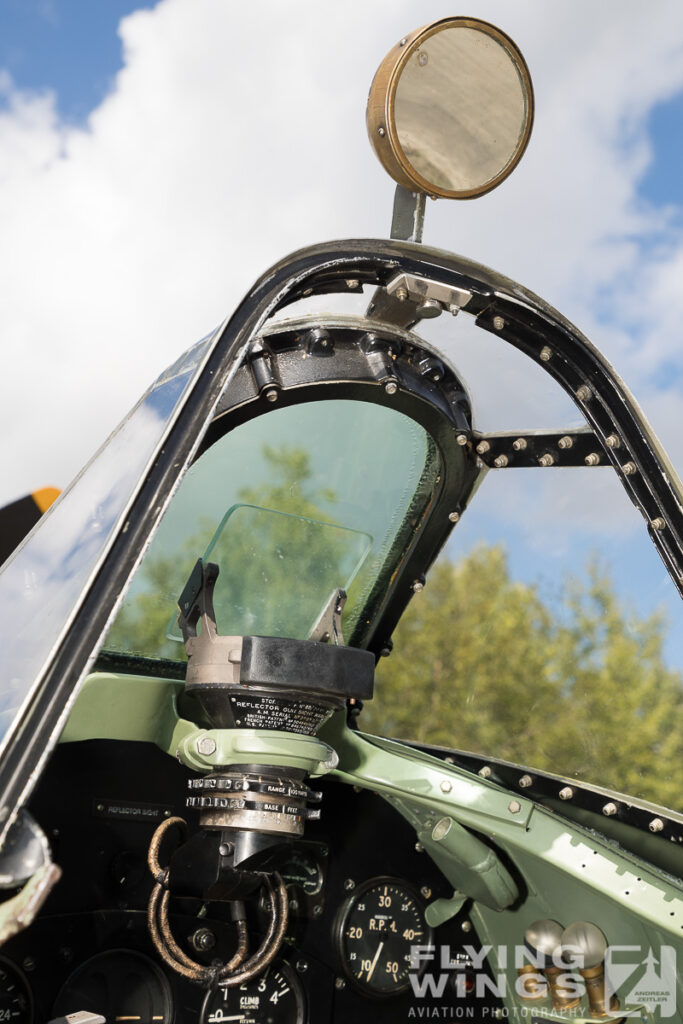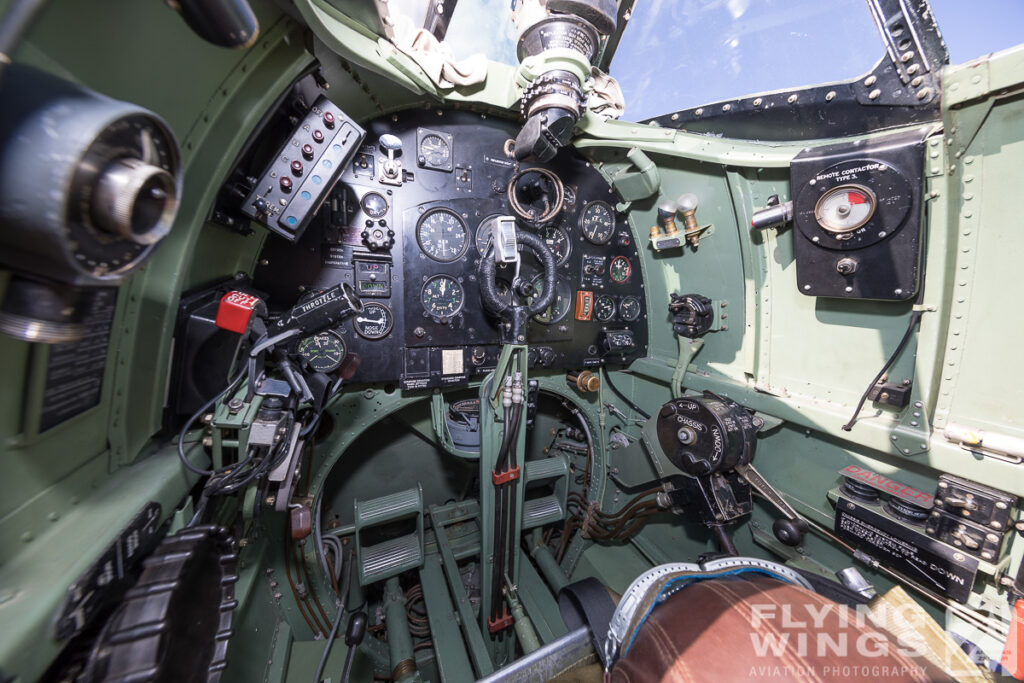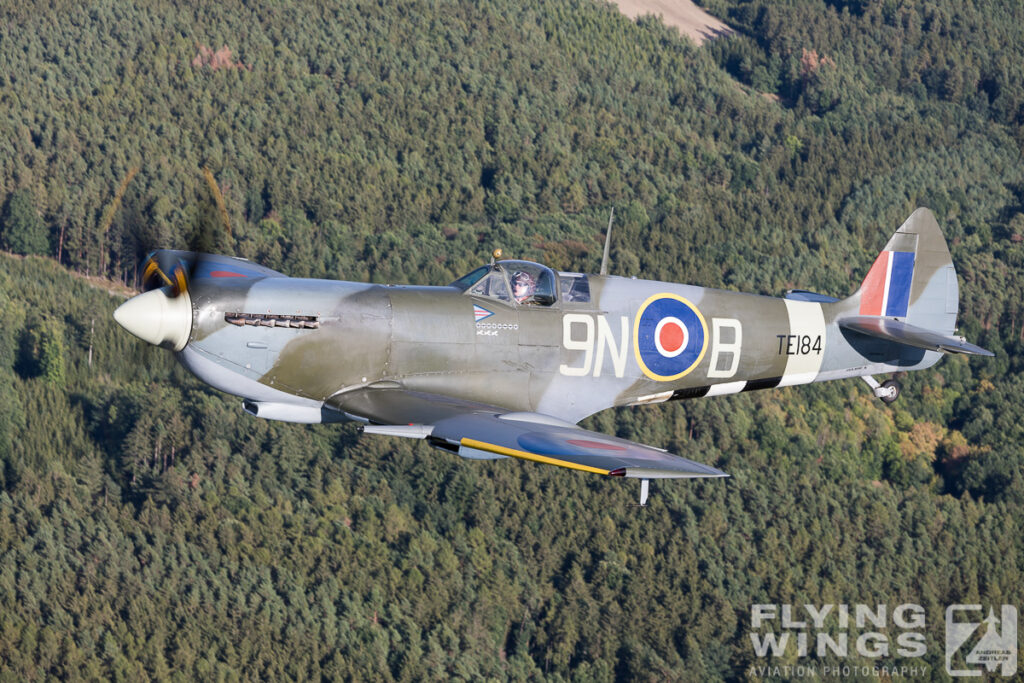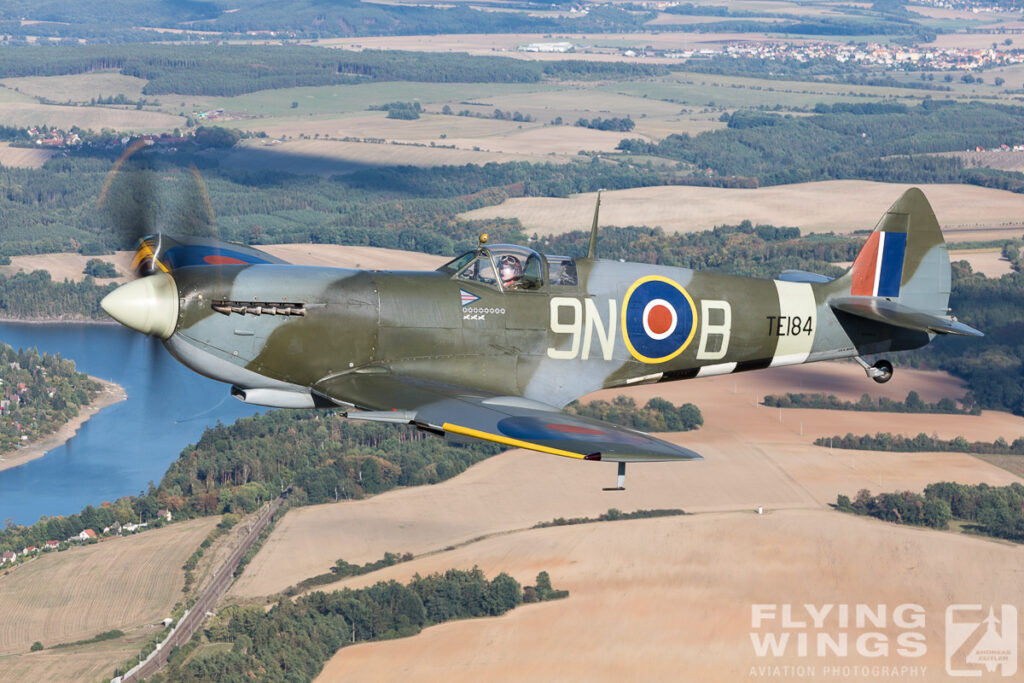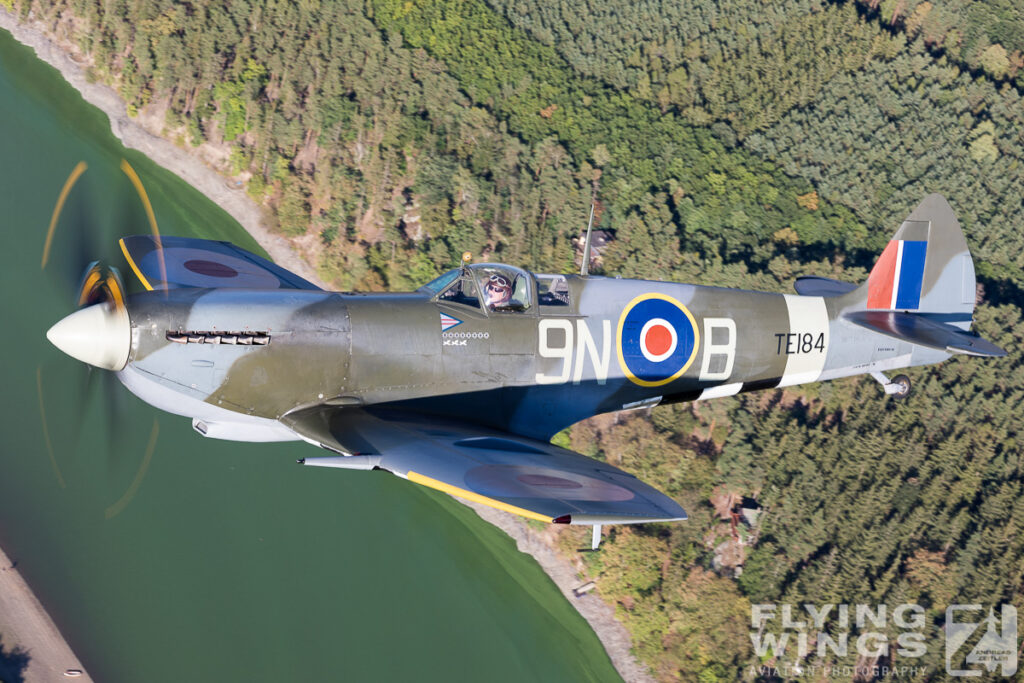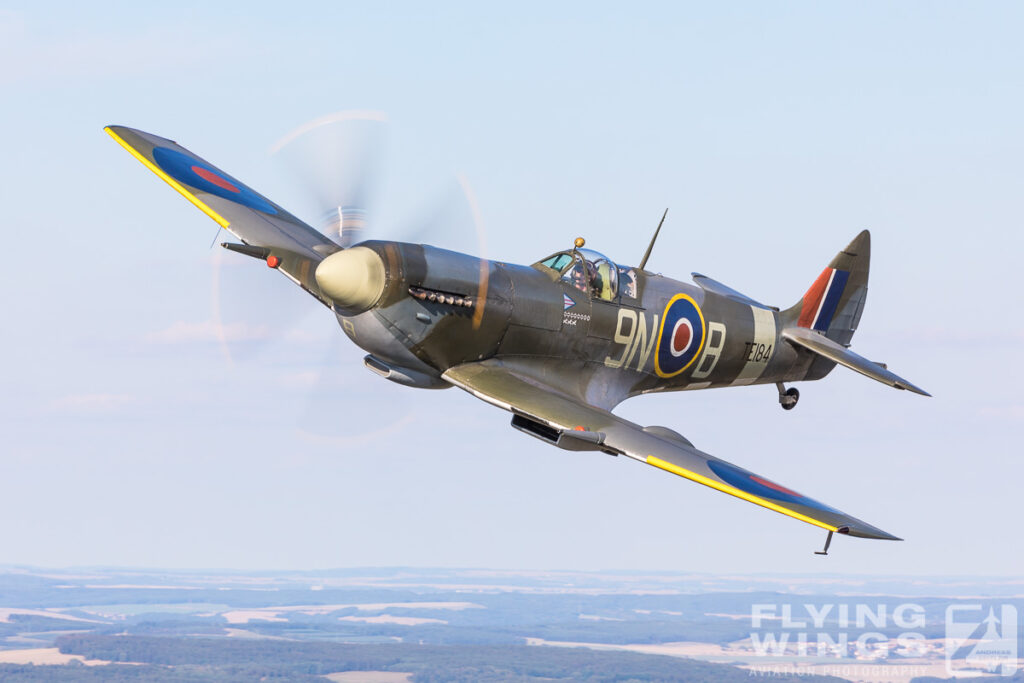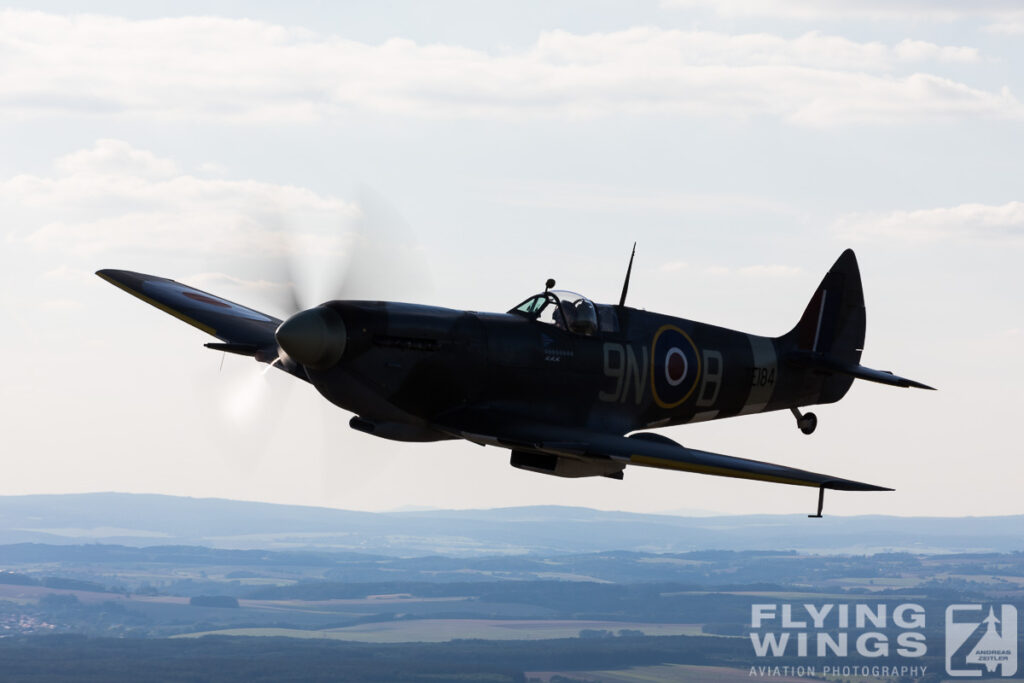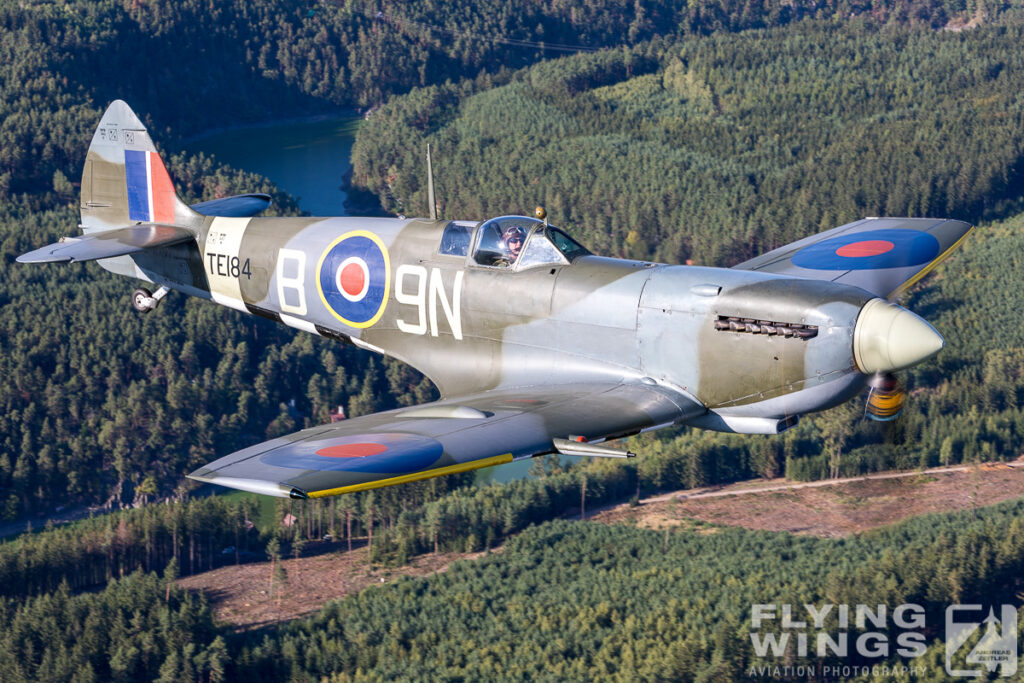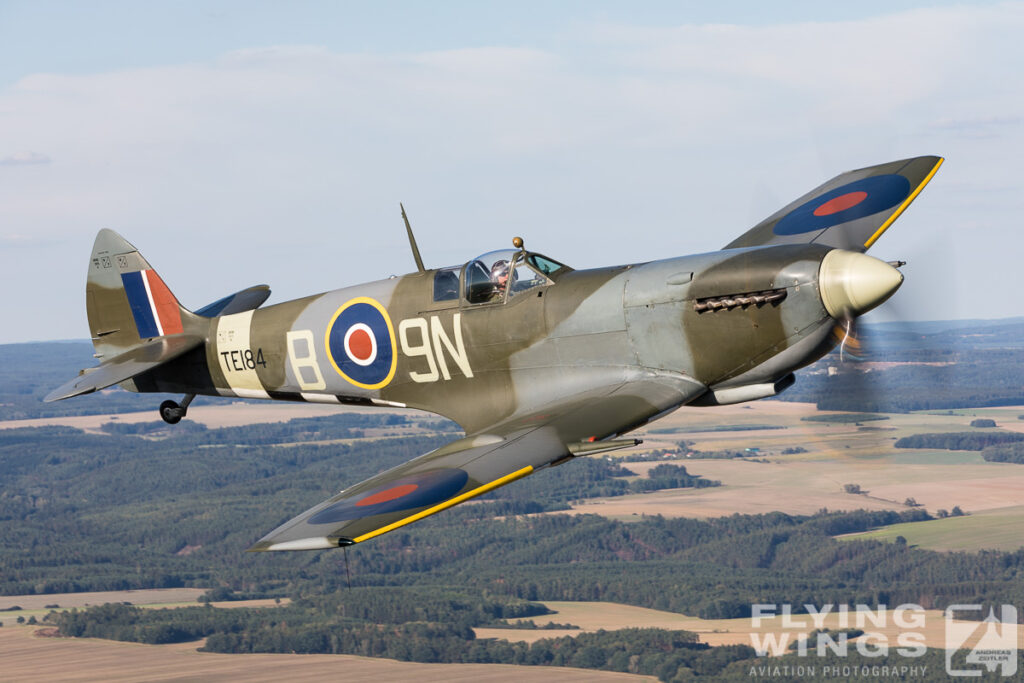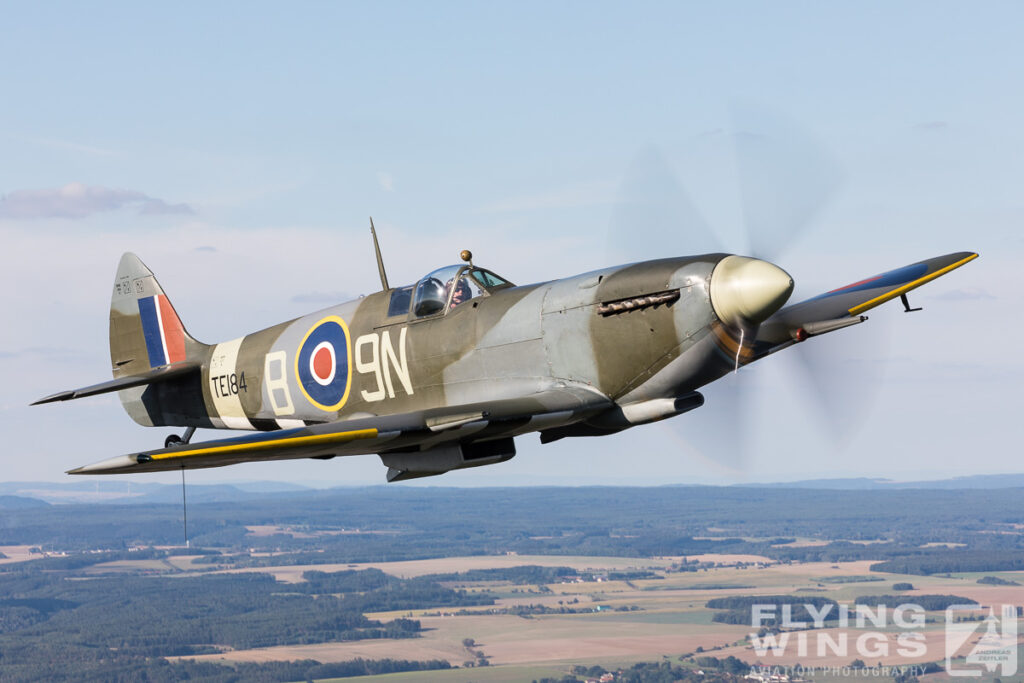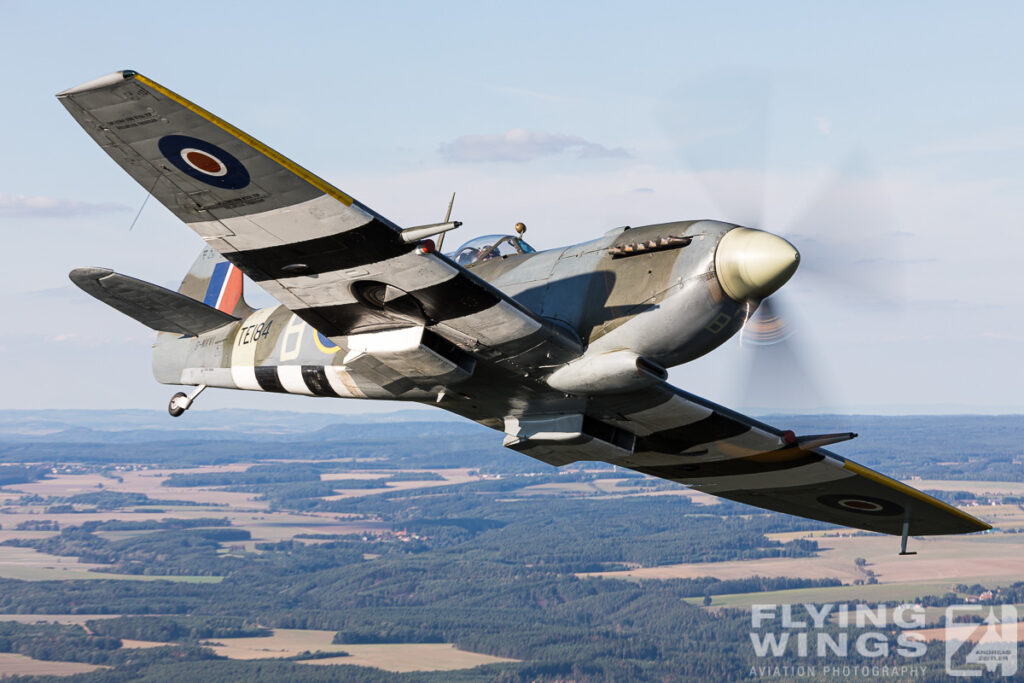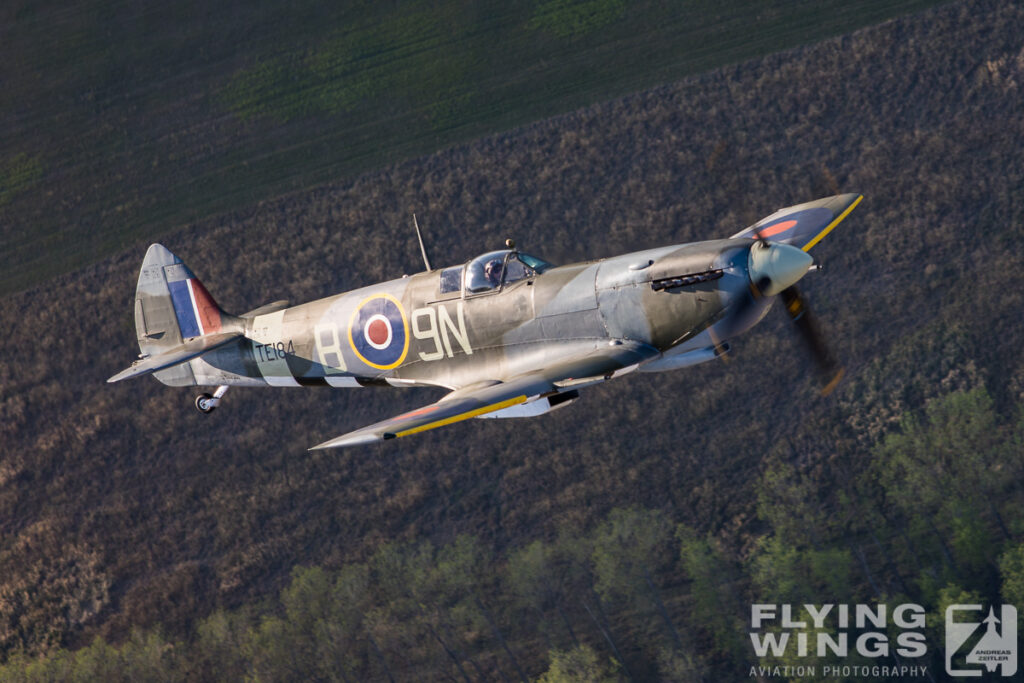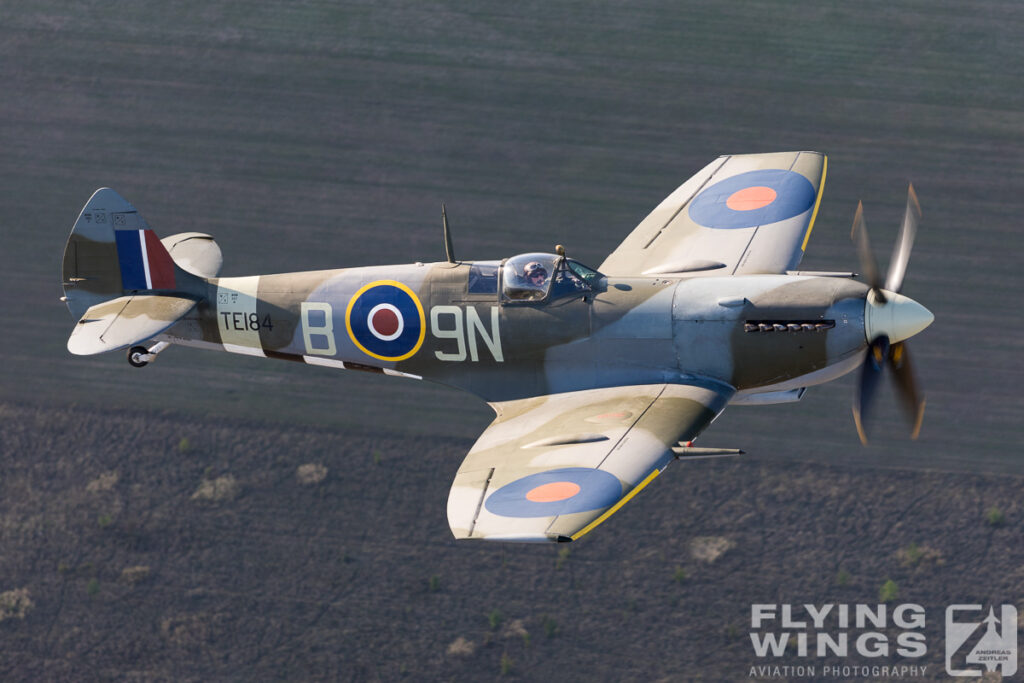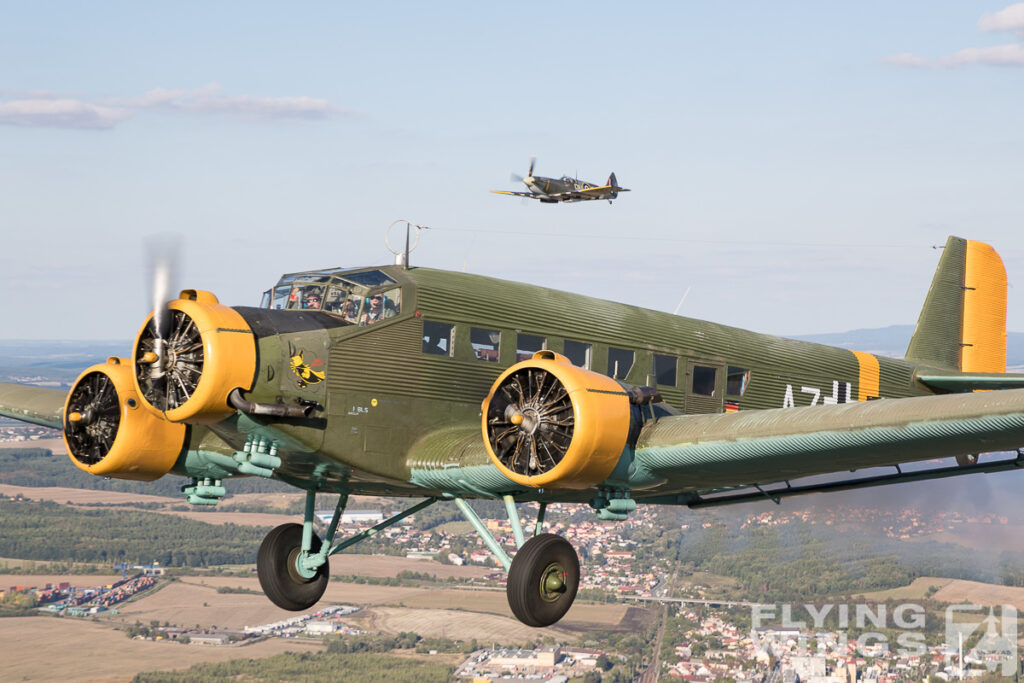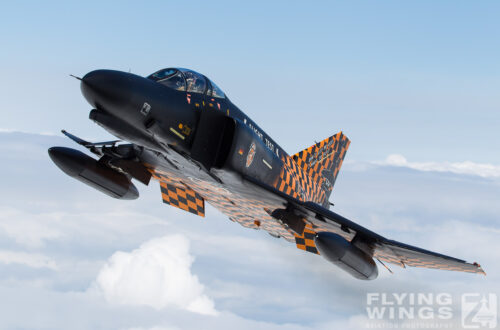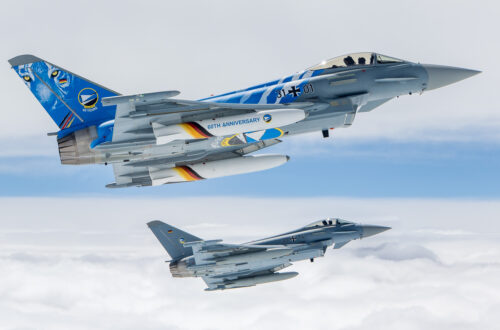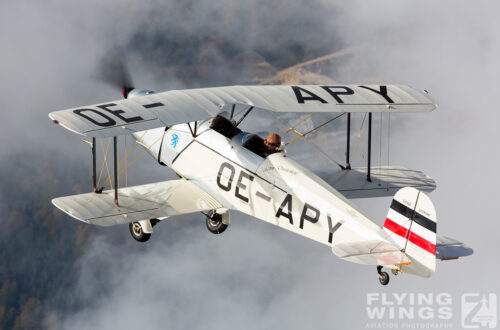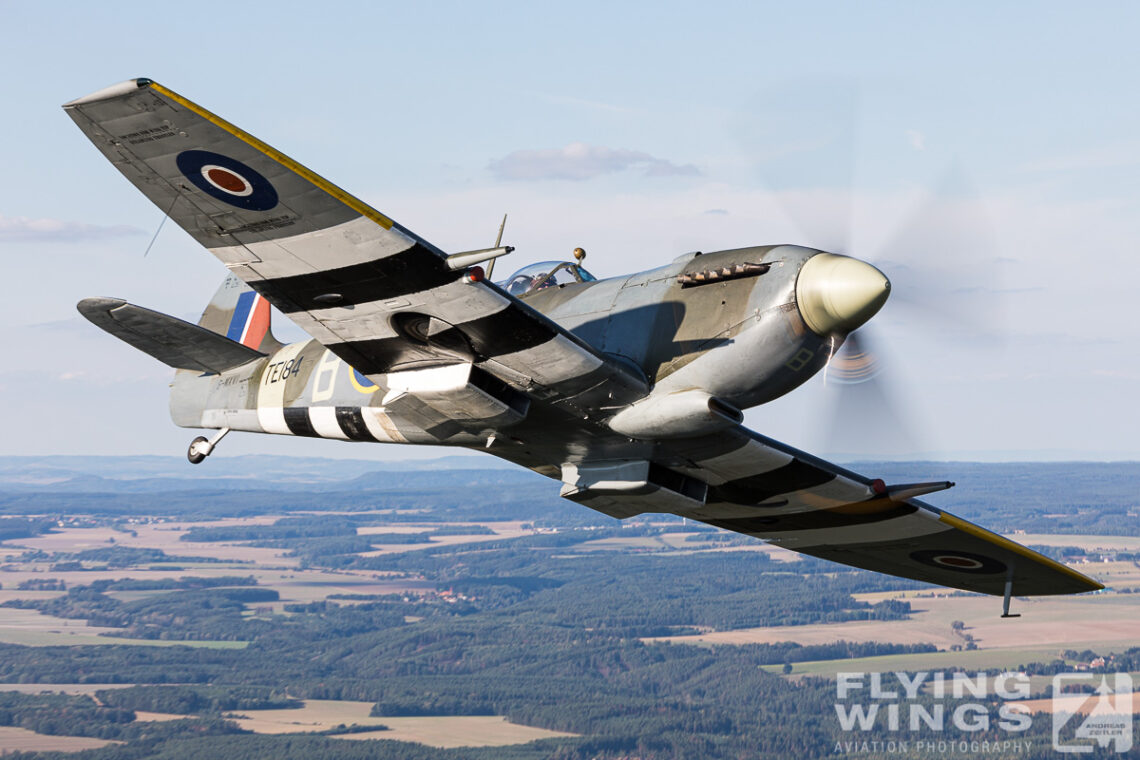
Otto Smik’s Spitfire TE184
Nine Balkenkreuze and three silhouettes of the Fieseler Fi 103, aka „Vergeltungswaffe 1 (V1)“ as kill markings depict this Spitfire Mk.XVI as the personal plane of Otto Smik. Smik was one of the most successfully Czechoslovakian pilots in service of the RAF during WW II. He crashed and died on 28 November 1944 near Zwolle after been hit by German AA fire. Smik’s aircraft has been re-created by the Spitfire’s owner, Stephen Stead, who deliberately stationed this warbird in the Czech Republic. He presents it at airshows around central Europe to pay tribute to the contributions of Czechoslovak and Polish pilots in fighting Nazi Germany. It was an honour to be able to photograph this aircraft flying over the Czech Republic!
Where? Plzen, Czech Republic
When? September 2018
Spitfire LF Mk. XVI.RV TE184 History
Spitfire LF, Mark 16.RV., serial number TE184, has been handed over to the Royal Air Force (RAF) at Castle Bromwich on 30th May 1945. At this facility of Vickers-Armstrong Ltd all Spitfires of that mark were built. The main difference from the Spitfire Mk.IX has been the US and licence-build Packard Merlin 266 engine. It was optimized to fly at low level, subsequently the Mk.XVI Spitfires also received the LF-designation for a „Low-Altitude Fighter“. A distinctive feature of these low flying Spitfires require high maneuverability close to the ground were also the clipped wingtips, which take away some of the elegance when comparing them to the Spitfires equipped with the elliptical wing.

Aircraft documents show a flying time of 40 minutes for check flights, before TE184 was handed over to No.9 MU (Maintenance Unit) at Cosford. The task of this unit was to receive newly build aircraft and to distribute them to the Squadrons of the RAF.
At times this could be up to 500 aircraft of all kinds in a month! Due to its late production and delivery shortly after the end of the war, TE148 was put into storage. On 12th October the aircraft was handed over to No.20 MU at Aston Down and eleven months after that, on 16th September 1946, to No.6 MU at Brize Norton. And once again it was put into storage for two more years.
It got more active after 7th September 1948 when in service with the No.203 Advanced Flying School (to be renamed later to No.226 Operational Conversion Unit (OCU)). Its next move occured on 27th February 1950 to No.607 RAuxAF at Ouston. Apart from another Spitfire TE184 was the sole Mk.16 of that unit, the remainder was made up from Spitfire Mk.22 and Harvards. Mid-June 1951 it was again stored with No.33 MU at Lyneham, but only until 9th November, when it joined the Central Gunnery School at Leconfield. Looking at TE184s logbook, it accumulated roughly 300 flying hours until the end of 1950. After that the Spitfire was flying for the Squadron only every now and then, and only for about an hour per sortie. The final logbook entry dates from 30th Januar 1951. A landing accident on that day meant the end of TE148 from active RAF service. Its subsequent future was that of a ground training aircraft, gate guard and museum aircraft.
TE 184 today: reborn as G-MXVI

In 1986 Nick Grace bought the aircraft to bring it back to flying condition. The first flight under the civil registration G-MXVI (can’t imagine a better matching registration for this aircraft!) happened for TE148 on 23th November 1990. Looking at its recent history the aircraft has been completely reviewed and overhauled until February 2009 and in remains in the hands of its current owner Stephen Stead since April of that year.
The Mission: Paying tribute to Czechoslovakian and Polish Pilots
Stephen decided to bring TE148 to UK‘s Biggin Hill Heritage Hangar each winter for maintenance works, but during the summer’s airshow season the Spitfire operates out of the Czech’s Flying Legends hangar at Plzen-Line. It changes its colour scheme quite regularly to gice some variety. Additionally to that the wingtips can be changed rather easily to show the clipped and elliptical version. The different schemes however do always have one commonality: they represent aircraft of Czechoslovakian or Polish pilots in order to pay tribute to the contributions of these brave pilots in fighting Nazi Germany.
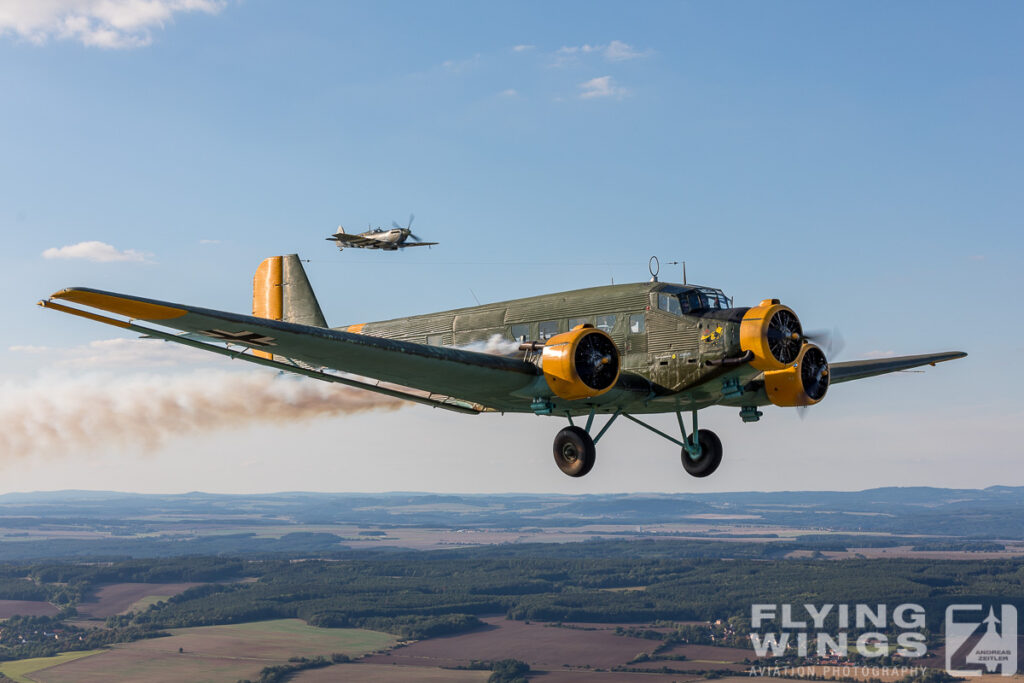
Still, towards the end of of our photoflight, we brought these two former enemies together: the Spitfire and the Junkers Ju-52/3m “Tante Ju”, flying in loose formation. But Stephen could not resist bringing himself in the 6’o clock position of the Ju when joining in…
Otto Smik’s Spitforet TE184 – Photo Gallery
More info about booking requests of this aircraft can be found at www.classicaircraftdisplays.com.
Thanks to Stephen, Jiri and all the crew at Plzen for this memorable flying experience!



